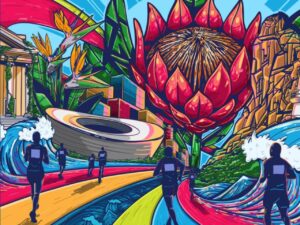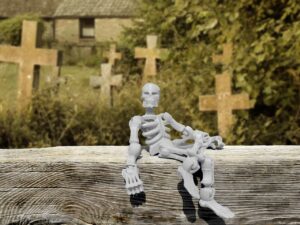[imagesource: Snowflake by Dr Joern N. Hopke]
Often when we talk about gaining perspective, we look outwards and upwards, to the stars, planets, and universe.
That viewpoint is important to help us realise how unimportant some things are in the greater scheme of things, making us step back and be in awe of the massive scale of life around us.
This perspective can also be found by looking downwards and inwards, in the small worlds of microscopic life that exists in every corner and on every surface around us.
Jupiter makes me feel tiny but seeing things smaller than me so close up, like that snowflake above, doesn’t necessarily make me feel big.
It just makes me feel like I am a part of so much more.
Anyway, I could ramble on all day with philosophies but we are actually here to see some incredible microscopic worlds from the 47th Nikon Small World Photomicrography Competition.
The winning images have just been announced, and they could send you on a similar philosophical tangent.
The winner is Baylor College of Medicine’s Jason Kirk for this incredible photograph of trichomes and stomata on a southern live oak leaf, a universe on its own:

Mashable has more about this winning image:
Stacking together 200 individual images of the leaf, Kirk used a custom-made microscope system and edited the colour temperature and hue in post-production. Those white tentacle looking things are trichomes (which protect the plant against extreme weather), the purple parts are the stomata (which regulate gases), and the bits in cyan are vessels (which guide water through the plant).
“The lighting side of it was complicated,” said Kirk in a press statement. “Microscope objectives are small and have a very shallow depth of focus. I couldn’t just stick a giant light next to the microscope and have the lighting be directional. It would be like trying to light the head of a pin with a light source that’s the size of your head. Nearly impossible.”
Second place was snaped up by Esmeralda Paric and Holly Stefen for their photograph of a microfluidic device filled with 300 000 networking neurons in two isolated populations.
It is beyond me what that means, but I am happy to just look:

Frank Reiser won third place for his intimate portrait of a hog louse with its rear leg, claw, and respiratory trachea in full view:

Then, in no particular order, are other images from the top 20.
Alison Pollack’s slime mould (Arcyria pomiformis) photograph is remarkable:

Dr Amy Engevik captured a rather stunning cross-section of a mouse’s intestine:

Here we have Martin Kaae Kristiansen, whose photo of filamentous strands of Nostoc cyanobacteria inside a gelatinous matrix made heads turn:

Jan van IJken spotted a water flea carrying embryos and peritrichs, which makes for an oddly cute subject if I don’t say so myself:

Lastly, we have a zoomed-in image of cotton fabric with pollen grains, captured by Dr Felice Placenti:

The competition also gave awards for videos of microscopic life in action, with first place going to Fabian J. Weston for his video of microfauna in a termite gut.
You can check that out here, among many more photographs and videos of minuscule worlds.
[source:mashable]





